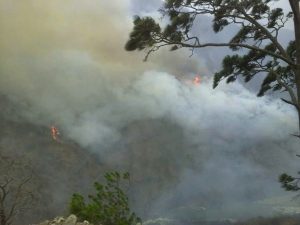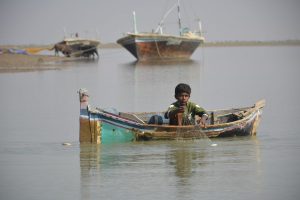With its clean and green spaces, and futuristic skyline, the Songdo Business District of South Korea isn’t exactly a place to imagine the perils of climate change. However, it became the centre of attention in early March as the 12th board meeting of the Green Climate Fund (GCF) took place.
The board approved its first eight projects for financing that it had finalised at its previous meeting in November 2015 (to the tune of US$168 million). There is great interest to understand how the fund plans to proceed now. Riding on the momentum of the Paris Agreement, 2016 should be a seminal year for the fund.
As the main source of money to combat climate change by implementing the agreement, the fund looks to absorb previous pledges by rich nations to provide US$100 billion a year from 2020 onwards.
In the frenzied run-up to the Paris climate summit last year, the GCF had also set itself a goal in November — to take funding decisions worth US$2.5 billion in 2016 for mitigation and adaptation projects. But with the immediate release of pressure for progress post Paris, at its first meeting in 2016, the GCF board decided to postpone all funding decisions.
Instead, as a GCF spokesperson said, board members agreed to focus on “key operational issues that will make it easier to approve funding proposals and enter into funding agreements.”
It was clear to observers that some of the approval decisions in November may have been made in haste to show the world that the GCF is ready to deliver as the global vehicle for climate financing. Many loose ends remain. The Songdo meeting may have sewed up some, but there are many more to tackle.
There are lots of projects in the pipeline. The big question is, are they the right ones?
The GCF now has 34 funding proposals. The secretariat explains that 22 stand a greater than 50% chance of being ready for approval in 2016. Together, these 22 proposals seek around US$1.5 billion, a billion for the private sector, and half a billion for the public sector.
The public sector proposals are a reason for concern. Currently all of them are from multilateral agencies (banks or UN agencies), none from national entities. This clearly goes against GCF’s stated aim of providing “direct access” to developing countries, and thus bringing about a “paradigm shift” in terms of access to finance for vulnerable countries.
However, what also holds true is that the funding proposals from many developing countries have critical gaps. Help should be in the form of better readiness support given by the GCF to these national entities in a number of areas, in line with the requirements of the proposal process — better feasibility studies; environmental and social impact assessment; economic analyses; stakeholder consultations; and other preparatory work.
Then there is the classification problem. The GCF is supposed to fund projects under ‘mitigation’ and ‘adaptation’ heads, but less than a third of these 22 projects can be placed in either group. In UN-speak, the remaining are classified as ‘cross-cutting’ projects.
Originally, this fund was set up to provide money 50:50 under the two heads, mitigation and adaptation. This third classification introduces ambiguity that board members of developing countries are certainly not comfortable with. This will continue to come up for discussion in subsequent board meetings.
Some progress, but is it enough?
The most important progress at Songdo was the board’s approval of the draft GCF strategic plan. It maps out the fund’s vision, identifies operational priorities and provides an action plan. It is a good start, though it does not yet answer some of the challenging questions on the project pipeline. Nor does it specify how GCF will reach its goals, by when and how much it will need for that. Right now, the draft is still too abstract to really be actionable.
There was some other progress. The US government transferred US$500 million of the US$3 billion it has pledged to the GCF so far.
GCF also added 13 organisations to the 20 already accredited and therefore eligible to develop and submit funding proposals, as well as oversee the management and implementation of projects. Contentiously, the 13 include two private banks — HSBC and Credit Agricole. HSBC has a record of investing in coal projects; Credit Agricole has faced money laundering charges.
As pointed out earlier, developing countries need support in preparing project proposals. While the GCF in still in the process of figuring out how this will work, Rwanda made a request at the board meeting for support. This led to debate about whether to perfect the system first and then begin support, or to learn and improve through supporting real examples. Finally, the board approved a US$1.5 million grant to Rwanda for preparation of its project proposal. There still are concerns about dishing out funds without specifying standardised criteria for such approvals, setting a bad precedent.
Warming outpacing GCF
The question about the rate of progress remains. The GCF is gearing to approve projects worth US$2.5 billion in 2016. The plan is to fund projects annually to the tune of US$100 billion from 2020. To disburse that level of funding, GCF will have to rise to the challenge, equip countries so they can articulate their demands better, and manage the spend of such large sums of money.
Climate change will not wait. Scientists revealed that February was the warmest month in recorded history, surpassing the previous global monthly record, set in December. An unprecedented heating of our world is now under way.
This article was first published by India Climate Dialogue, to view the original click here

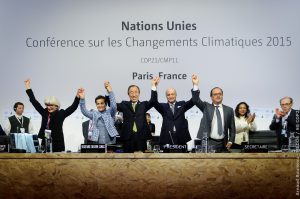

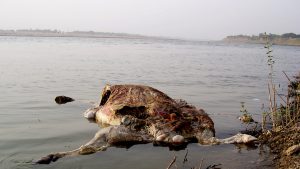
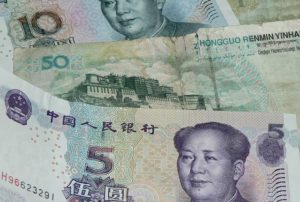
![Snow leopard in Sikkim captured at night through a camera trap in northern Sikkim [image by WWF-India]](https://dialogue.earth/content/uploads/2016/04/Snow_Leopard_Sikkim-e1598003045152-300x58.jpg)

